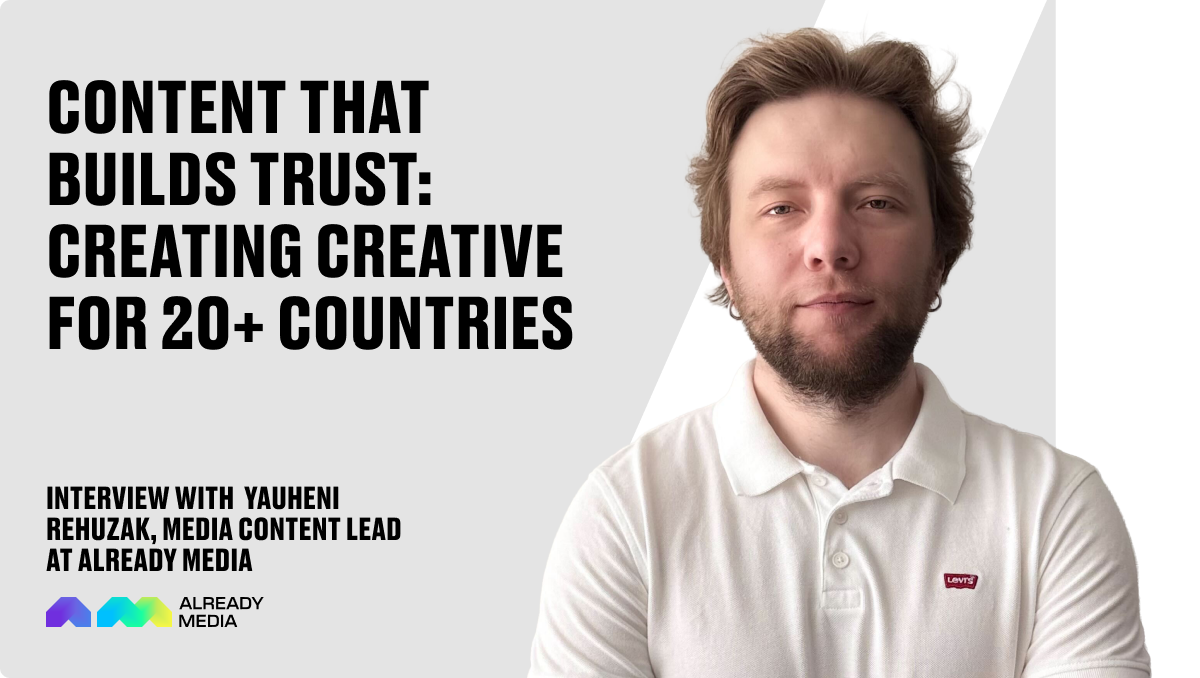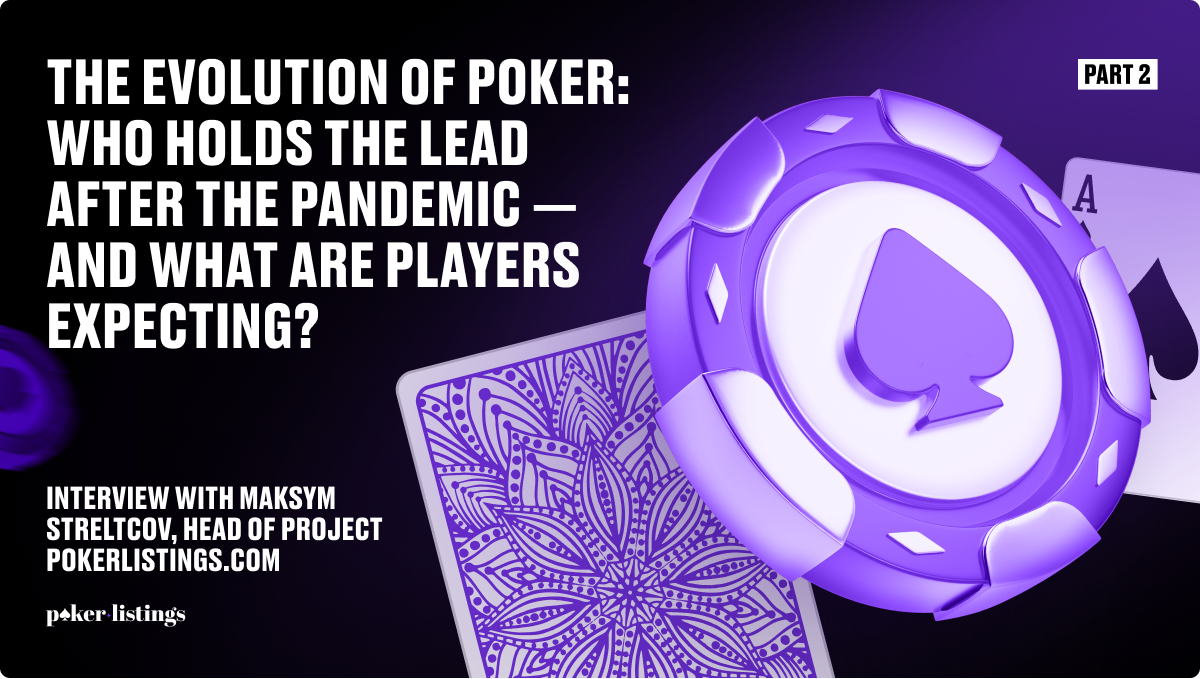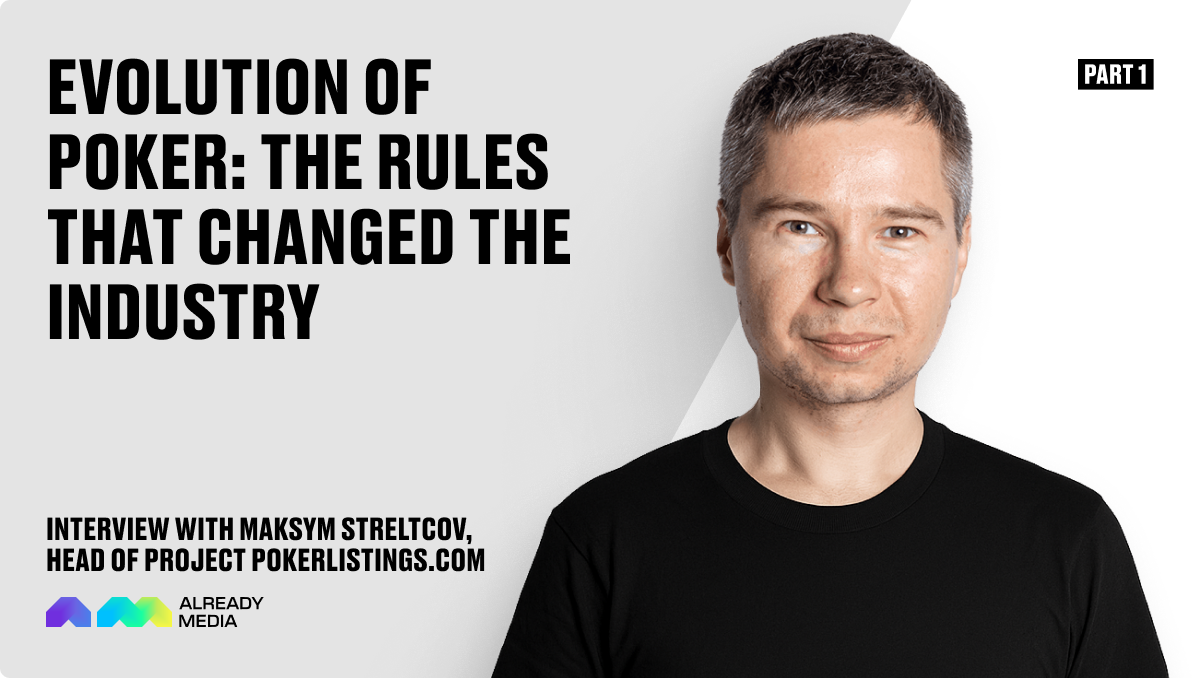
We aim to truly immerse ourselves in the cultural context, mindset, and nuances of each region. We analyze how content is delivered — from intonation to visual design and storytelling.
Behind media formats in iGaming, it’s not just about algorithms it’s about people. People with experience, perspective, and confidence in the approach they’ve chosen. One of them is Yevhenii Reguzak, Media Content Lead at Already Media. In this new episode of Expert Talks, we spoke with him about production processes, the balance between creativity and structure, managing an international content team, and building ideas that not only capture attention but also inspire trust in the brand.
Let’s start from the beginning. You’re currently the Media Content Lead at Already Media. Tell us how your journey with the company began and evolved.
This year marks five years since I joined the Already Media team. I started as a motion designer, creating video content for websites. These videos didn’t just bring additional traffic, they helped build user trust and engagement. After several successful launches, it became clear that video could be more than just an SEO tool, it could be a full-fledged media product with monetization and ad potential. Over time, this path took me from motion design to project management, and later to my current role as Media Content Lead, where I shape the media strategy, creative direction, and production across several verticals.
Internal Architecture and Team Roles
Our focus is on developing brands and products through social media and media formats.
Your team works across multiple SEO units. How are the workflows structured? How many people are on your team and what are your core tasks?
Right now, my team includes over 25 people. From day one at Already Media, we dealt with large-scale production, which led me to quickly start building a team: copywriters, voiceover talents, editors, and later influencers. Over time, we formed a strong and agile team. Our main focus is brand and product growth through media formats and social channels. Since we handle a variety of products, the tasks range from dynamic sports content to betting videos and influencer campaigns for different markets. Today, we create content for over 20 GEOs.
And from a management perspective how do you organize internal processes? Are you guided by strict deadlines and briefs or is there more creative freedom?
There’s no result without structure and deadlines. For everything to run like clockwork, each stage must be carefully designed even a small failure can affect the entire outcome. But since we work in a creative environment, freedom is also crucial: for initiatives, fresh ideas, and improvements. Sometimes thinking outside the box is exactly what helps us find solutions in complex situations. Structure is essential but I always try to give space for self-expression and growth. This balance helps us move forward.
How does your production cycle work from brief to publication? Do you have an internal methodology?
We follow a hybrid methodology that combines Kanban, Scrum, and our own production workflows tailored to different project types from sports content to poker and casino-related media. Every content type has its own rhythm, structure, and tone, so we apply context-specific approaches to match each vertical. In sports-related projects, speed and reactivity are key. We respond quickly to matches, viral moments, and trending topics often turning an idea into published content within the same day. At the same time, we also produce longer formats like 40-minute podcasts, where scripting and storytelling play a central role. In the poker vertical, we typically create long-form and evergreen content. But during major offline events like the Irish Poker Open, speed becomes the priority. In such cases, we switch to a sports-style workflow: shoot, edit, and publish in one day. This model helps us stay effective across formats and pacing.
Content Without Borders: From Local Insights to IPL Case
How do you approach localization? Many brands do cultural research before launching campaigns. What does this look like for your team?
We aim to fully understand the cultural context, mindset, and specific traits of every region. We analyze how content is conveyed from tone to visual language and storytelling. This varies greatly across countries. The key is simple: beyond trend analysis, we talk to the audience. For example, I personally studied the phenomenon of Bollywood, why it’s so exaggerated and why it resonates. With our Brazilian team, we discussed daily life, interests, and worldviews. I always try to look at content through the lens of those who live in that culture.
Can you share an example of a campaign where localization played a decisive role?
Yes one of our Indian projects is a great case of how adapting to a local market can make a real difference. We work with a well-known cricket influencer, a respected historian and BBC-published author. He’s essentially a living encyclopedia of rare cricket facts and stories. We built a content series around his expertise. For each major match or tournament, we produce short-form videos that connect current games with historical facts, legendary rivalries, and moments that shaped the sport. This locally driven storytelling strongly resonates with viewers, who appreciate the cultural depth and insight behind each piece. As a result, during the IPL season alone, this format helped us generate over 180 million views across the brand’s platforms. It’s a clear example of how local relevance and expert storytelling can drive massive engagement and why choosing the right influencer matters.
Which channels are currently most effective for engaging the audience — video, influencers, ambassadors?
A multichannel approach is the most effective. We produce video content, collaborate with influencers, and make the most of every touchpoint. The key is to build a strong connection between the product and the audience. Trust is what matters most if a person is ready to act and your brand is the first that comes to mind, you’ve done it right.
How do you work with influencers? How many active collaborations do you currently have, in which countries are you present, and how do you select them for specific markets or products?
At the moment, we’re actively working across key global regions, including India, LATAM, the UK, Spain, the US, and Africa. Our content platforms generate millions of views every month. We currently collaborate with over 10 active creators on a regular basis, and in some markets, we run multiple projects simultaneously. In total, we are developing and scaling eight distinct brands each with its own content strategy, target audience, and performance metrics. We’re also exploring partnerships with local sports leagues, focusing on producing original and engaging content that fully complies with copyright regulations. In most cases, we either build a brand from scratch or acquire an existing one. From there, we create a full content ecosystem around it including social media channels, video platforms, influencer collaborations, and supporting assets tailored to the local market.
Looking ahead, what future do you see for influencer marketing? What key insights can you already draw from your experience?
We’re now in a phase where content is evolving rapidly. The rise of AI tools brings many new opportunities, but competition has also intensified. The future lies in using technology wisely and building strong, authentic connections with the audience. People still seek emotion, passion, and a sense of belonging. When a follower feels like they’re part of something real, part of a team you’re not just building a brand, you’re building a community. And that’s what truly drives long-term growth.
Conclusion
Our conversation with Yevhenii offered a perspective on media production as a strategic pillar – not just a support function. In a high-speed, international content environment, the team builds a structure where creativity reinforces process rather than conflicting with it. This approach is especially relevant in iGaming, where trust in the brand increasingly stems from localized content, consistent visual language, and a tone that resonates across regions.

